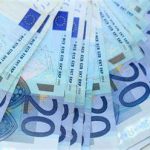The Dangers of Counterfeit Money: Understanding the Risks and Consequences
In an increasingly cashless society, using physical currency might seem out-of-date to some, yet counterfeit money stays a relentless problem that impacts individuals, companies, and economies worldwide. The sophistication of current counterfeiting techniques has just grown, making it essential for consumers and service owners to educate themselves about the dangers, recognition approaches, and legal repercussions of counterfeit currency. This short article checks out the intricacies of counterfeit money, lays out the steps one can require to protect versus it, and answers often asked concerns about this relevant subject.
Understanding Counterfeit Money
Counterfeit money refers to currency that has actually been produced illegally with the intent to trick. Counterfeiters use different approaches to replicate banknotes and coins, frequently making use of premium printing innovation and intricate designs that mimic real currency. While the main motive behind producing counterfeit currency is monetary gain, the ramifications extend beyond mere theft; they can destabilize economies, disadvantage honest organizations, and result in extreme legal effects for those included.
The Impact of Counterfeit Money
Economic Consequences: When counterfeiting becomes extensive, it can cause inflation, a decline in currency value, and overall suspect in the nation's financial system. This wonder about can result in consumers keeping their money or choosing for alternative types of transactions, which can even more hurt the economy.
Effect on Businesses: Businesses, especially small ones, are often hit hardest by counterfeit currency. Accepting fake notes can result in substantial financial losses and even insolvency. Furthermore, counterfeiting can damage a business's credibility; clients might be less ready to trust brand names that come down with counterfeiting schemes.
Legal Repercussions: Unwittingly accepting counterfeit money does not eliminate liability from people or organizations. The law usually requires that those who possess counterfeit currency should report it to authorities, as purposefully handling fake money can result in criminal charges.
How to Recognize Counterfeit Money
Recognizing counterfeit money is important for securing oneself from monetary loss. Here are some reliable ways to determine fake currency:
Check the Print Quality: Genuine currency has a particular texture, color, and print quality that can be hard to replicate. Examine banknotes for smudging or blurring, which might show counterfeiting.
Look for Watermarks: Most contemporary banknotes contain watermarks that are challenging to duplicate. Hold the costs approximately the light to see if the watermark is present and clear.
Check the Security Thread: Real banknotes have embedded security threads, generally noticeable when held up to the light. Counterfeit expenses may do not have these functions, or they might be inadequately reproduced.
Use a UV Light: Many currencies have aspects that fluoresce under ultraviolet light. Inspecting these functions can help in determining the credibility of a banknote.
Feel the Texture: Authentic currency is printed on a specific kind of paper that feels different from regular paper. Rubbing your fingers over the expense can assist you recognize its credibility.
Tips to Protect Against Counterfeit Currency
To minimize the risk of coming down with counterfeit money, people and businesses can carry out the following procedures:
Inform Employees: Regular training sessions on how to find counterfeit money can be helpful for staff members, particularly those in retail settings.
Use Detection Tools: Invest in counterfeit detection devices such as UV lights, pen testers, or digital note validators that can accurately examine currency credibility.
Maintain a Close Eye on Transactions: Encourage watchful tracking of money deals and screens for prospective counterfeit notes.
Legal Aspects of Counterfeit Money

Participating in the production, distribution, or use of counterfeit currency is against the law in essentially every country. Legal consequences can consist of large fines and jail time. Government agencies, such as the U.S. Secret Service, actively examine counterfeit money operations, and people discovered guilty of participation in counterfeiting might deal with severe penalties.
Often Asked Questions (FAQs).
1. Is it illegal to unconsciously accept counterfeit money?
Yes, while it may not be a criminal charge to accept counterfeit currency unknowingly, there is a commitment to report the counterfeit to authorities. Failure to do so can cause civil liabilities.
2. What should I do if I get counterfeit money?
If you think you have actually received counterfeit money, do not attempt to invest it. Rather, report the occurrence to regional police or your country's financial authority. Furthermore, record 100% echtes falschgeld of the deal and where you got the currency.
3. Exist particular currencies that are more typically counterfeited?
Yes. The U.S. dollar is the most extensively counterfeited currency internationally, however other currencies like the euro, British pound, and Indian rupee have actually also been counterfeited thoroughly.
4. How can I guarantee my service isn't accepting counterfeit money?
Train your workers on acknowledging counterfeit notes, purchase detection technology, and execute strict cash-handling practices.
5. What can I do to spread out awareness about counterfeiting?
Sharing info through workshops, neighborhood boards, or social media platforms can educate others about the threats and avoidance approaches related to counterfeit currency.
Conclusion.
Counterfeit currency presents substantial threats not simply to specific consumers but also to businesses and the economy as a whole. Comprehending how to recognize fake currency, recognizing the additional ramifications of counterfeiting, and taking proactive steps can minimize threats. Awareness and watchfulness can make a considerable distinction as we continue to browse a world where counterfeit money remains a risk to financial integrity. By equipping themselves with understanding and tools to fight counterfeiting, people and companies can protect themselves and add to a more safe financial environment.
